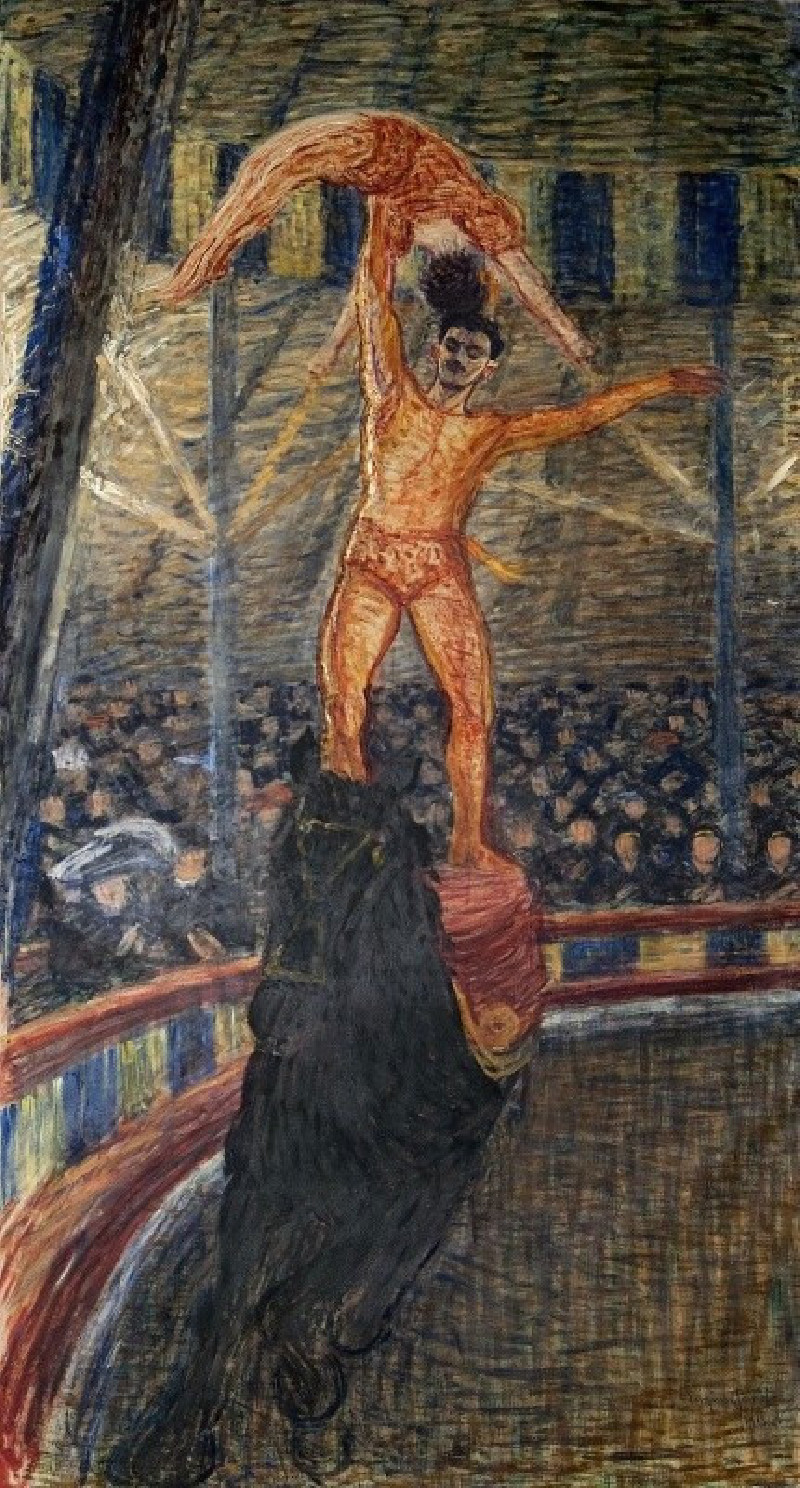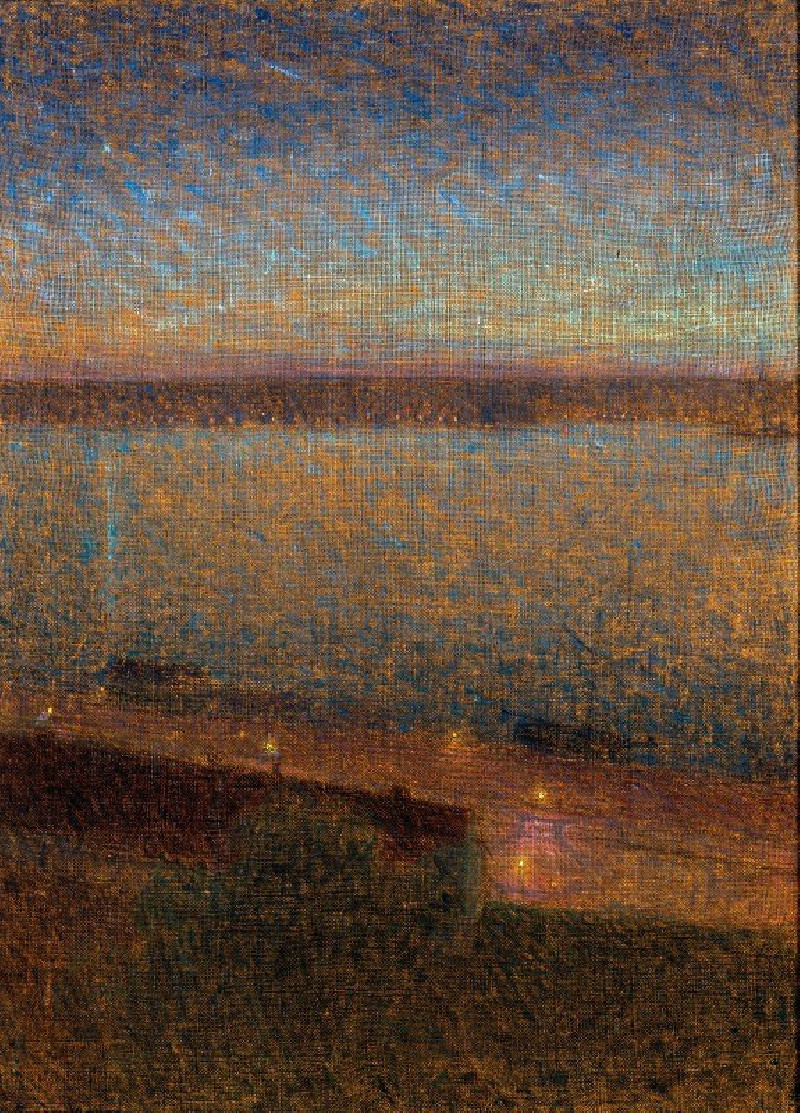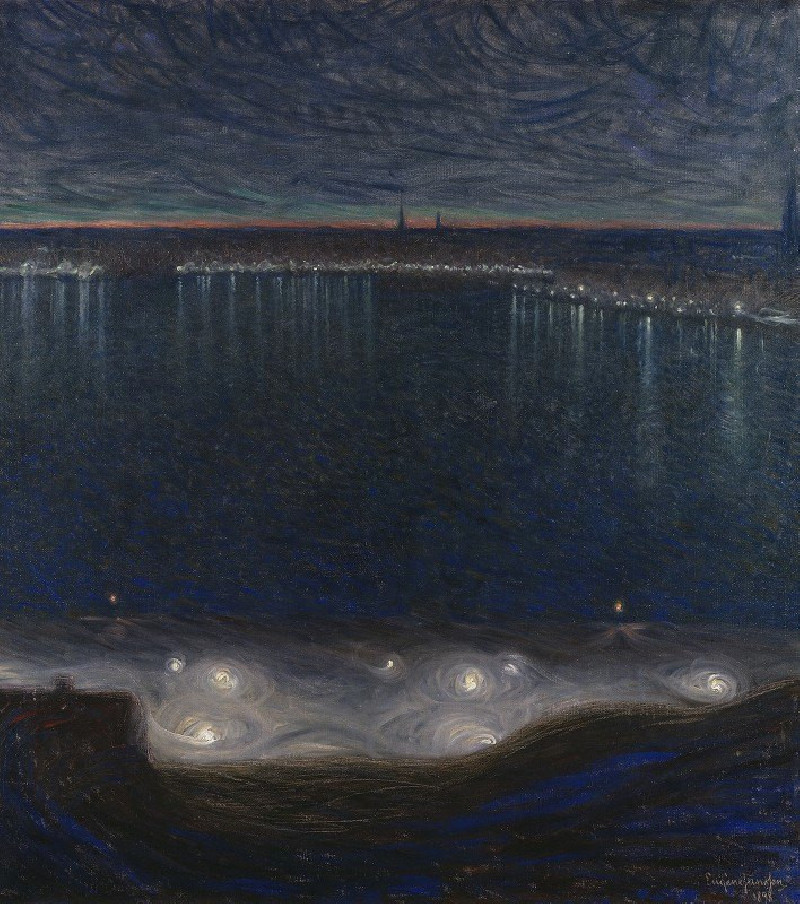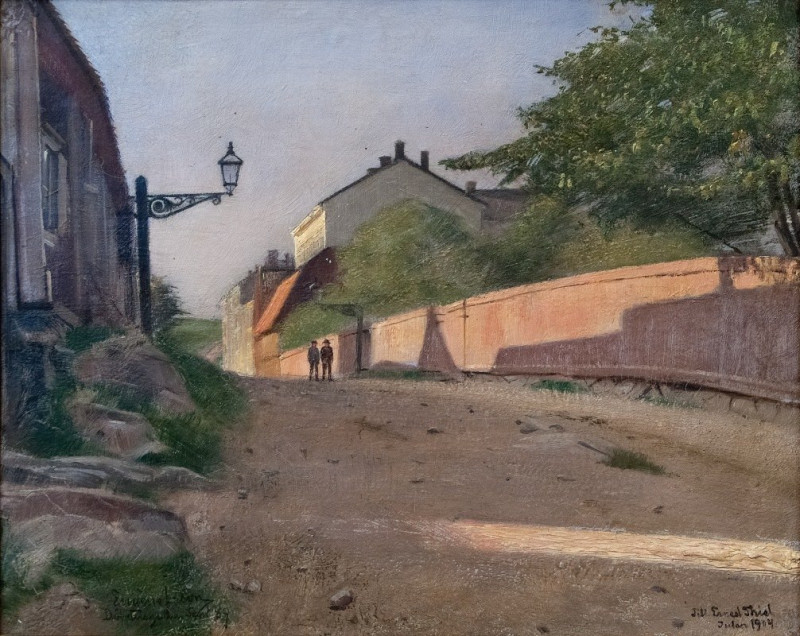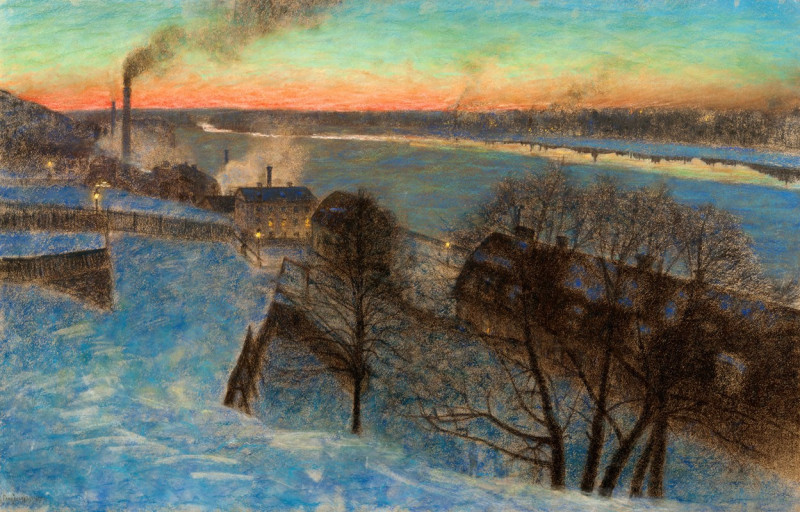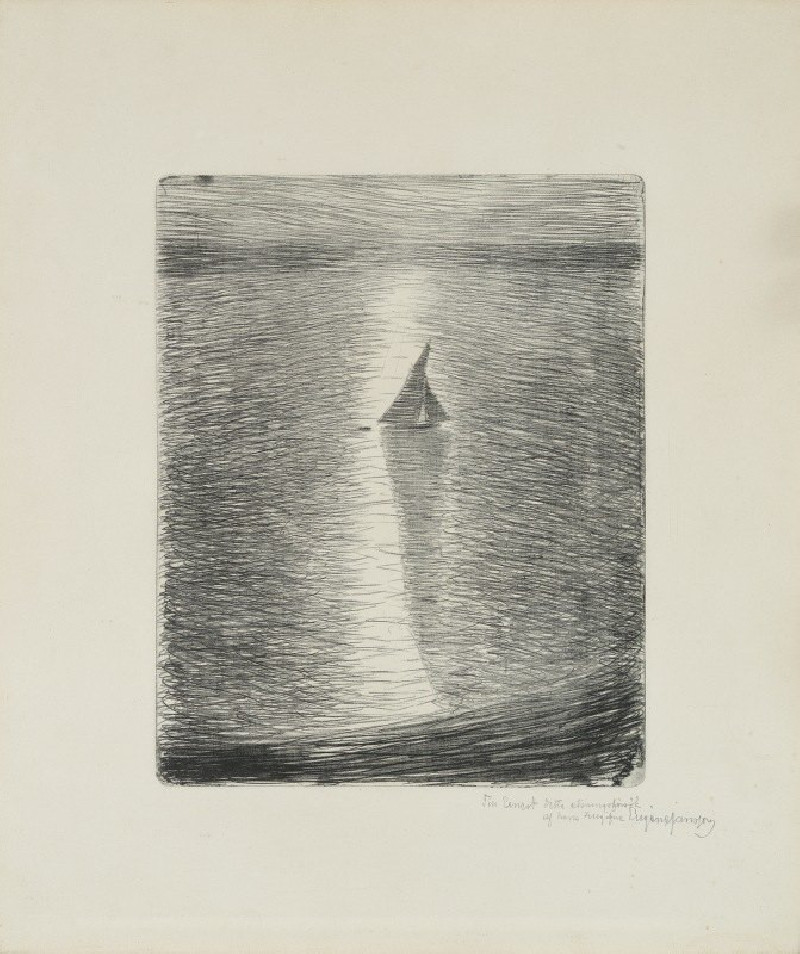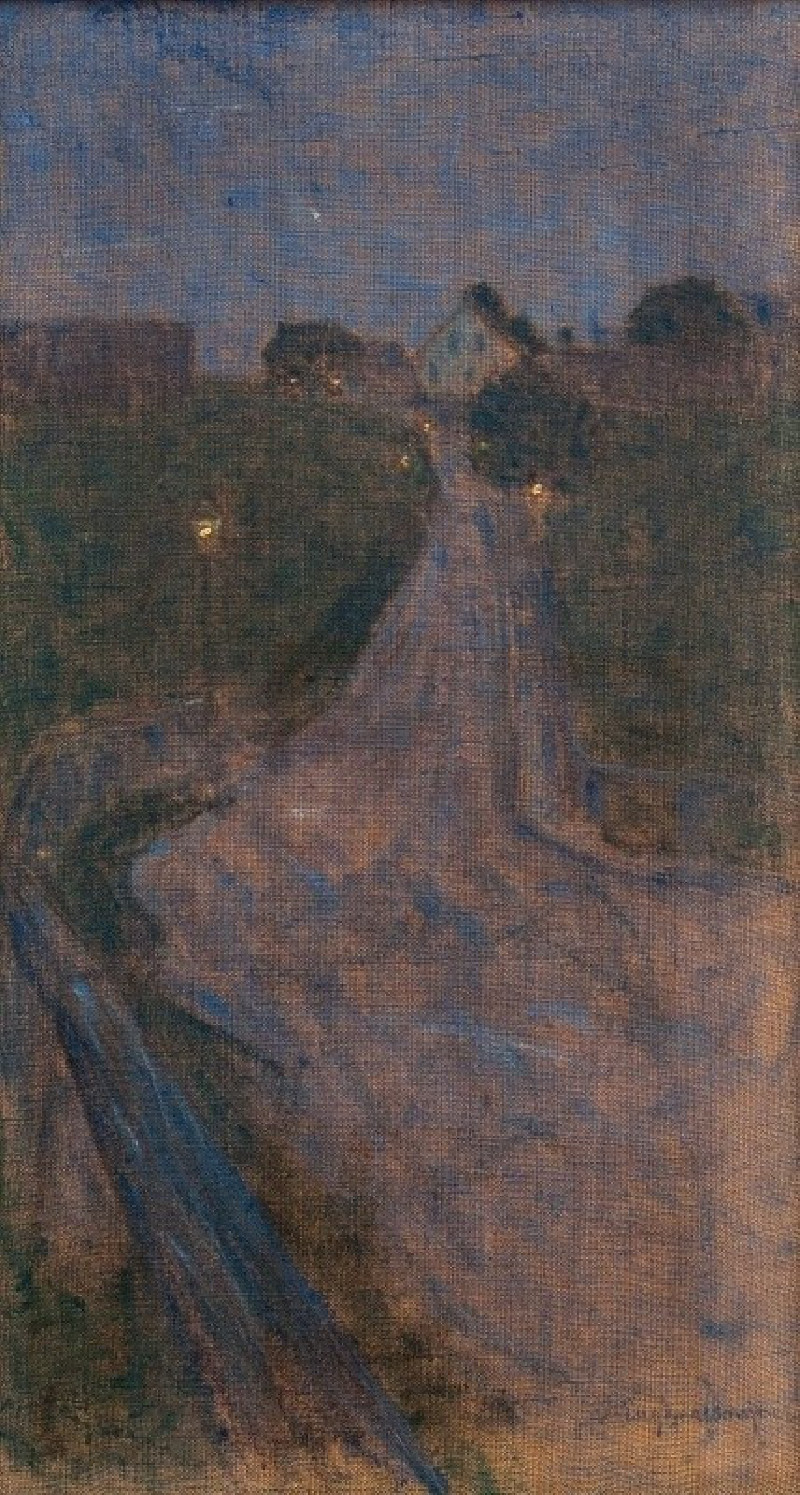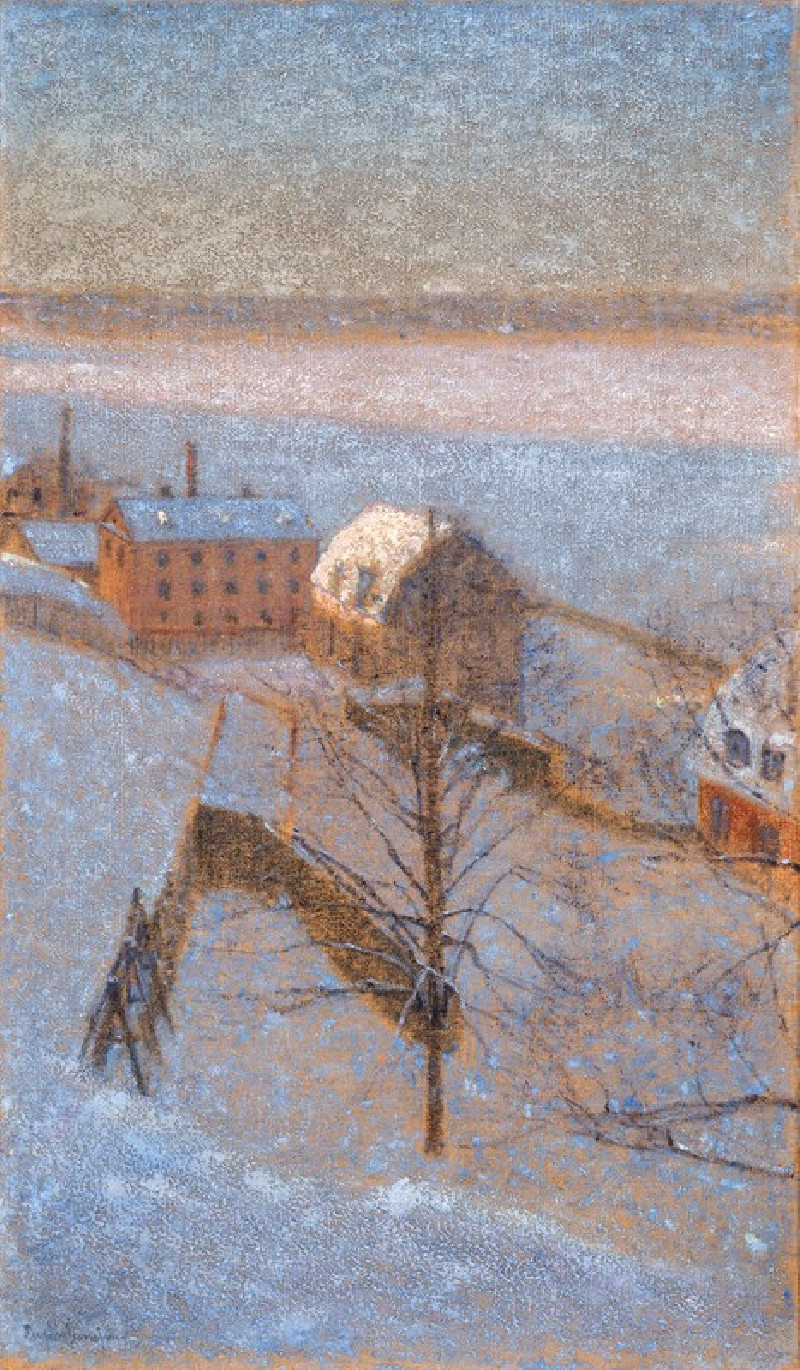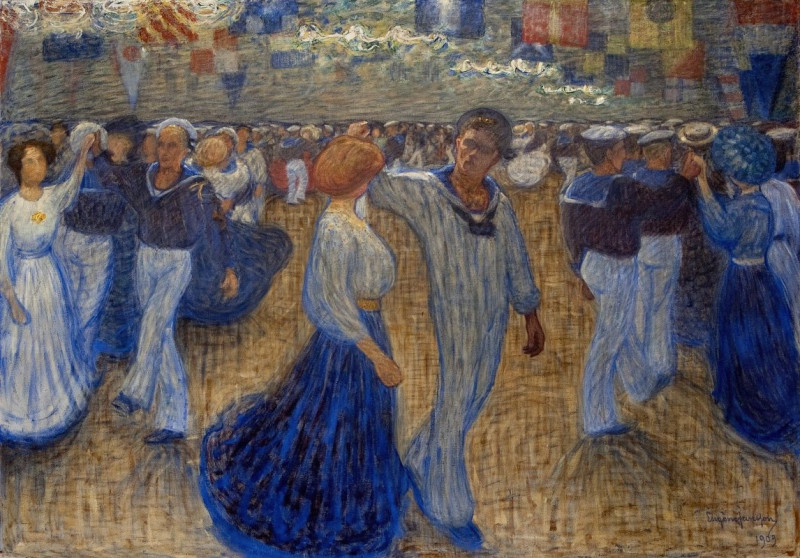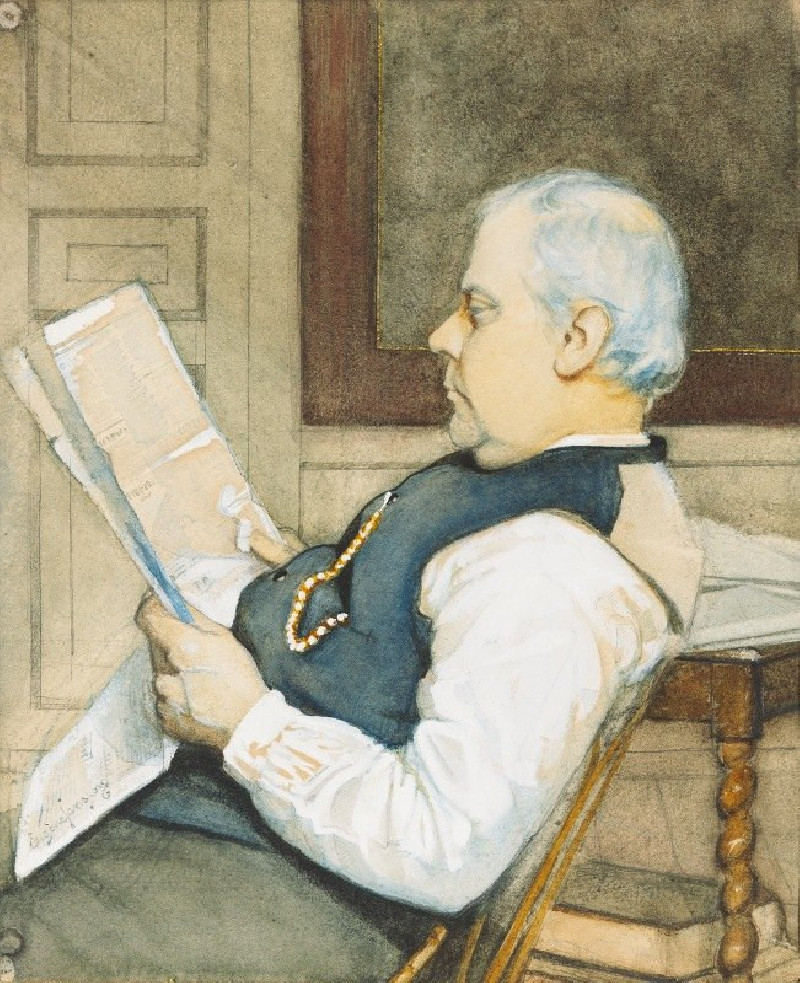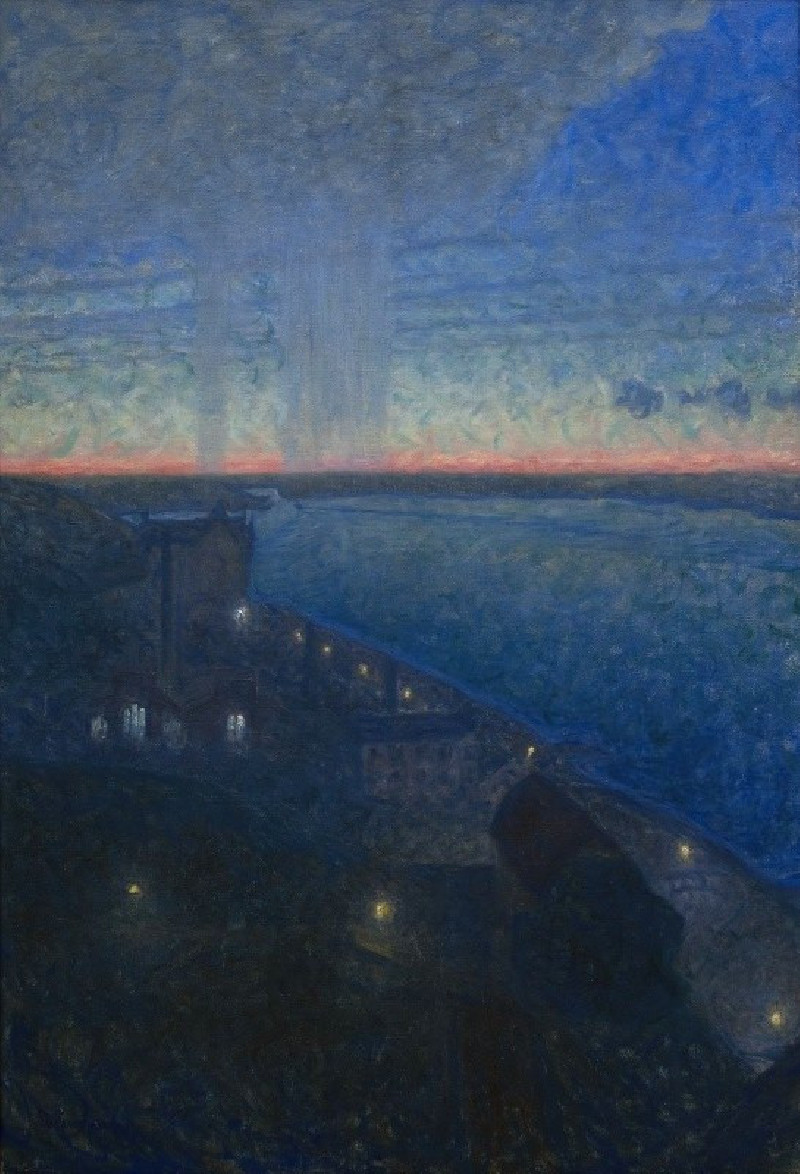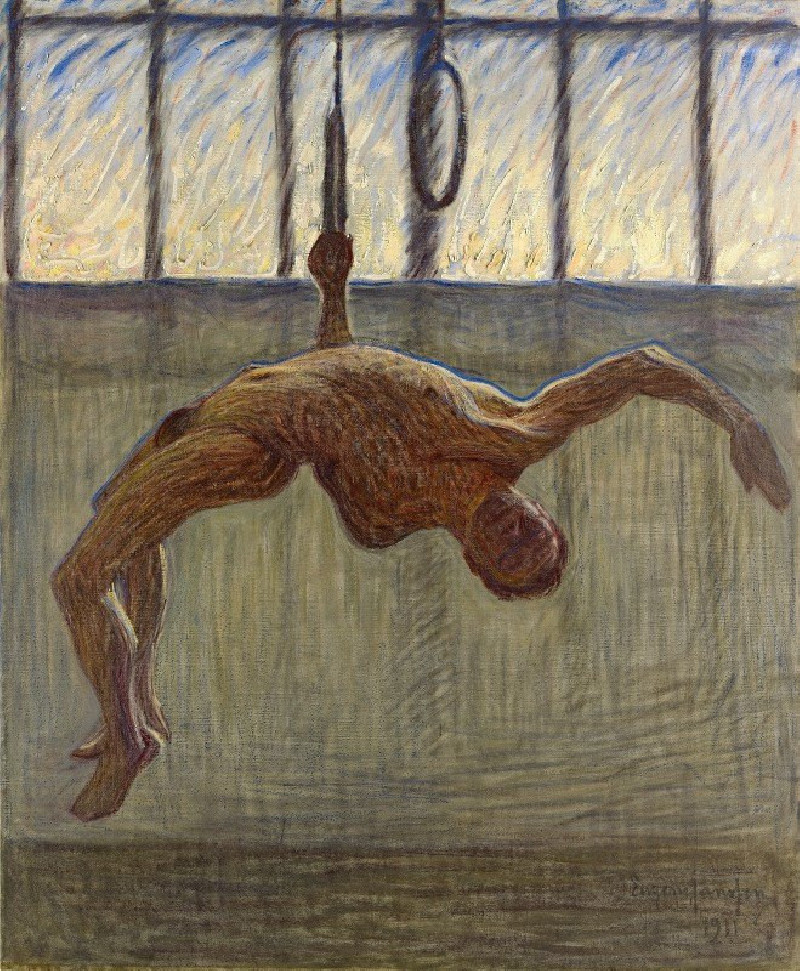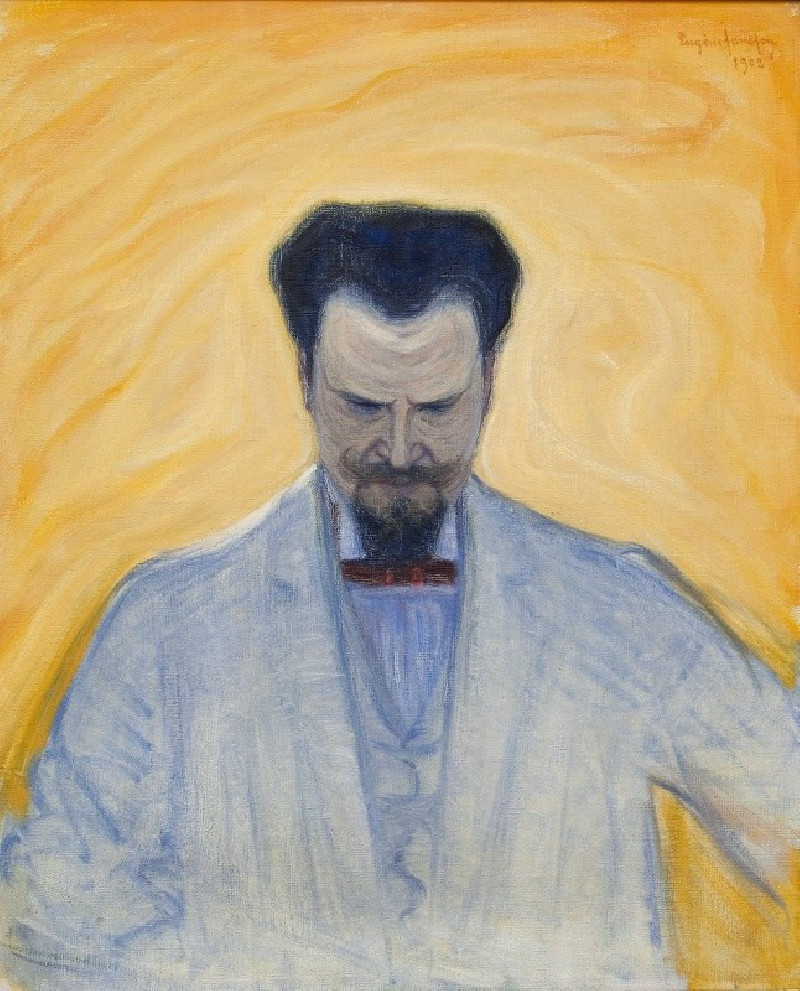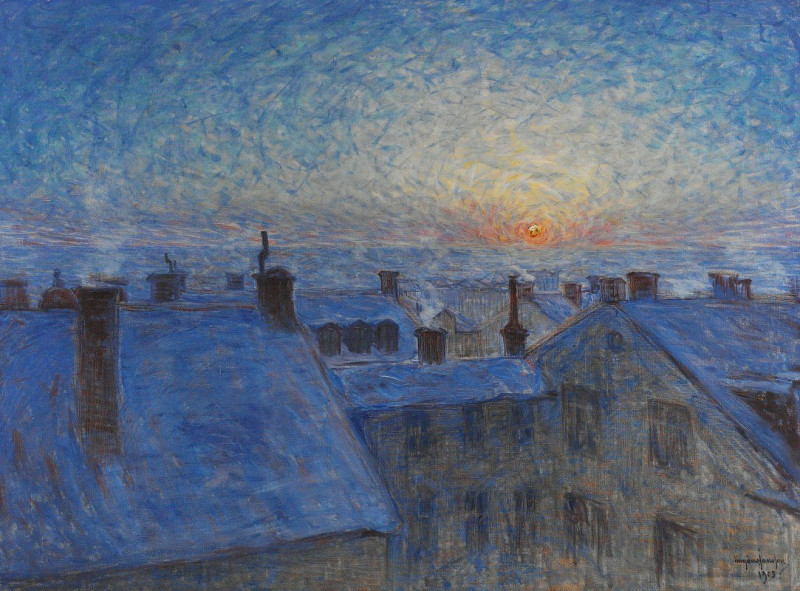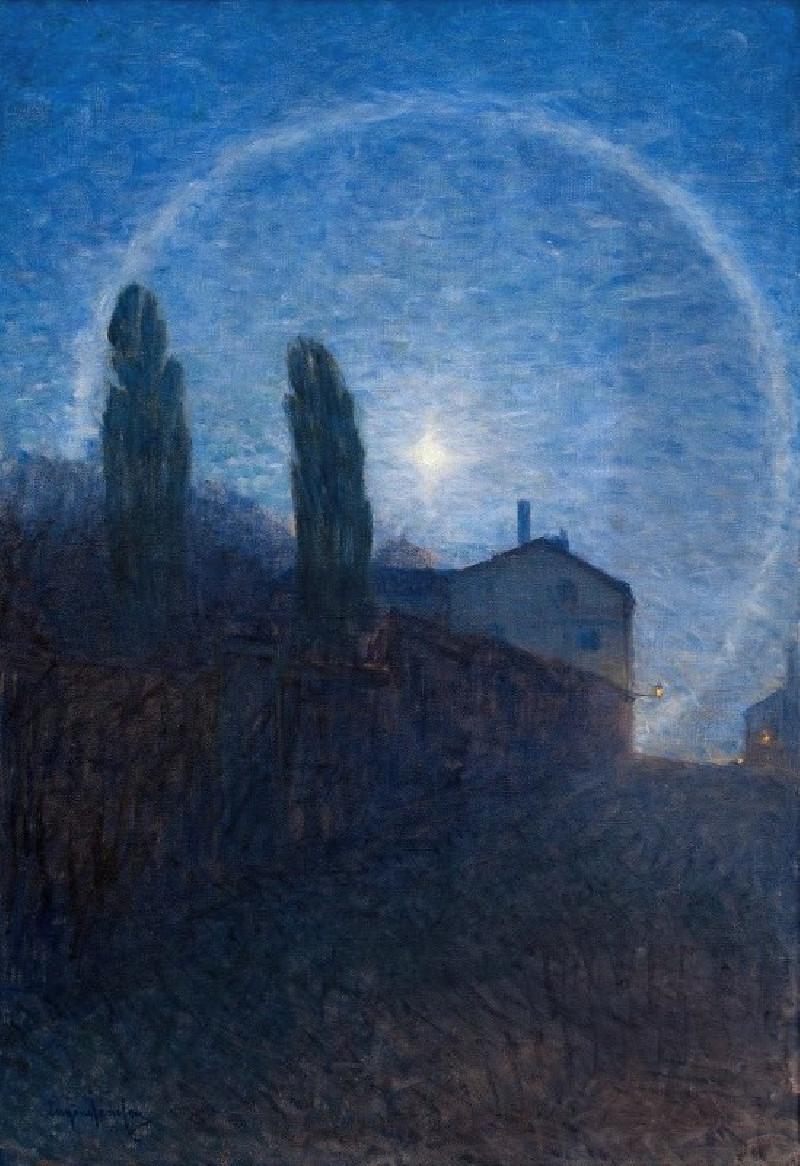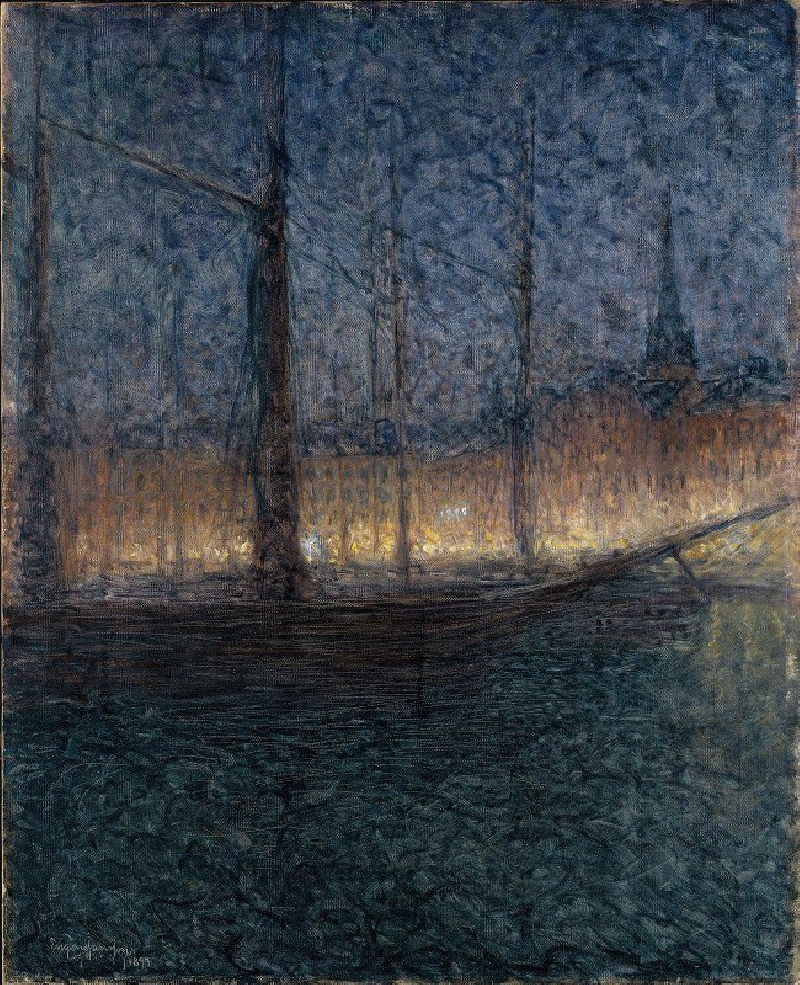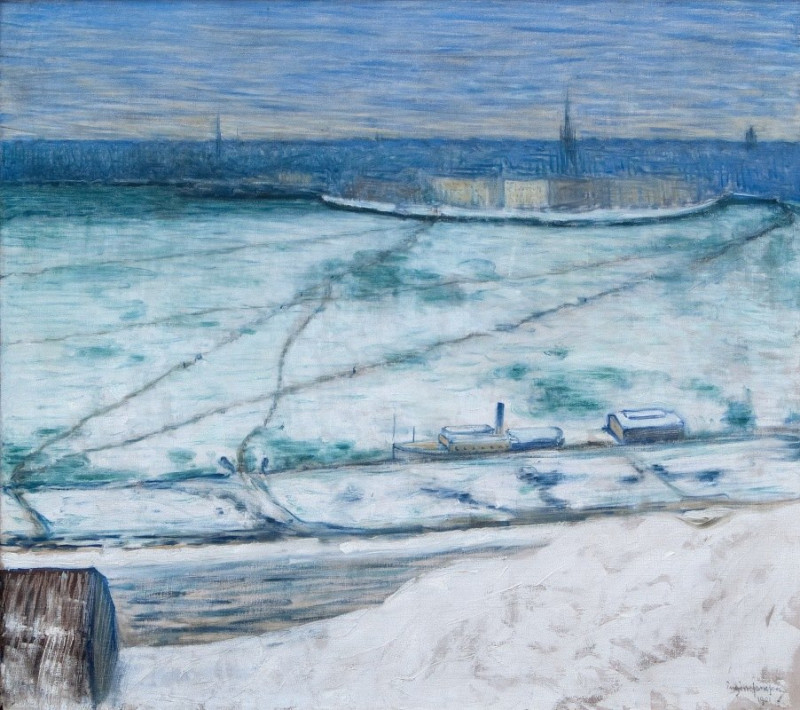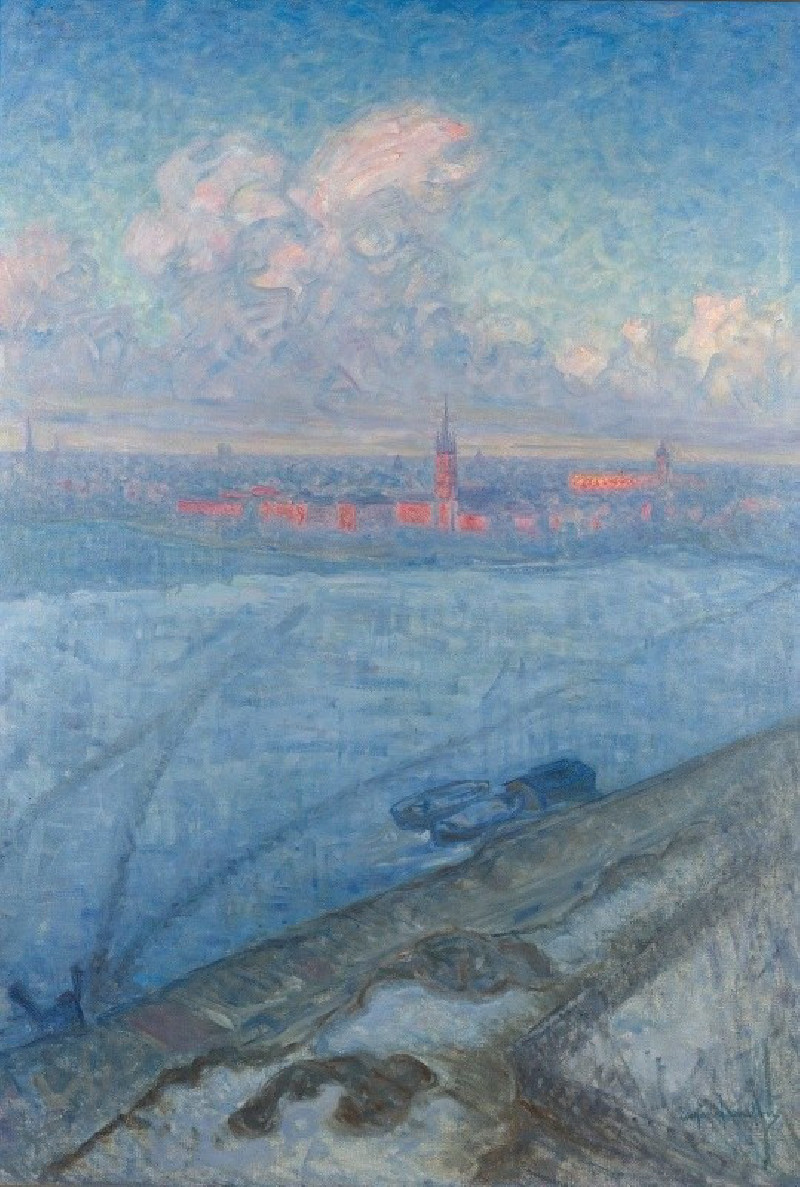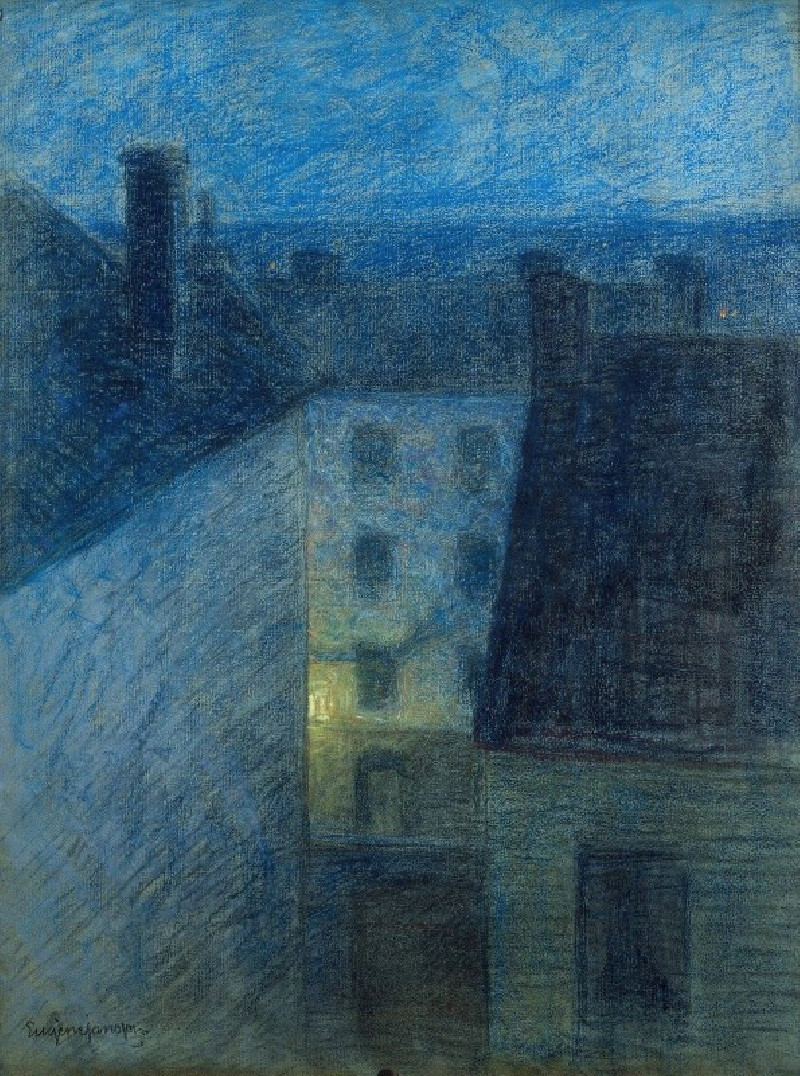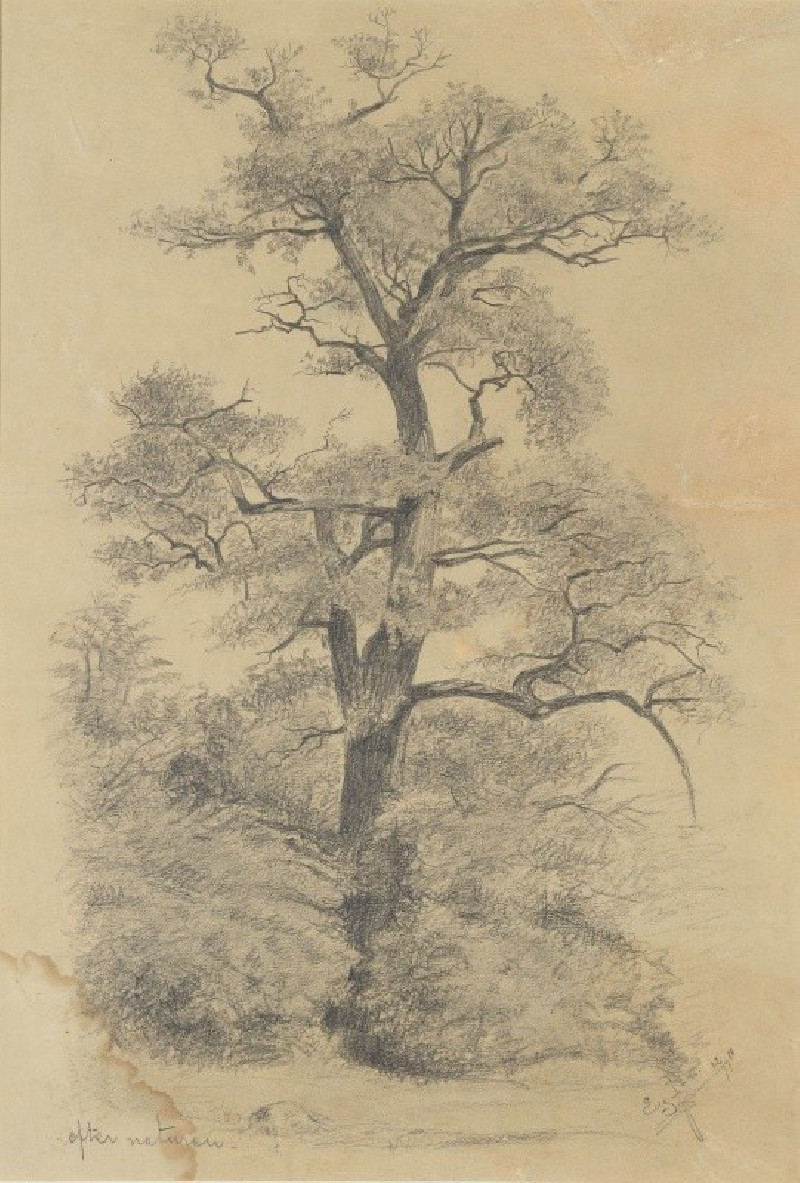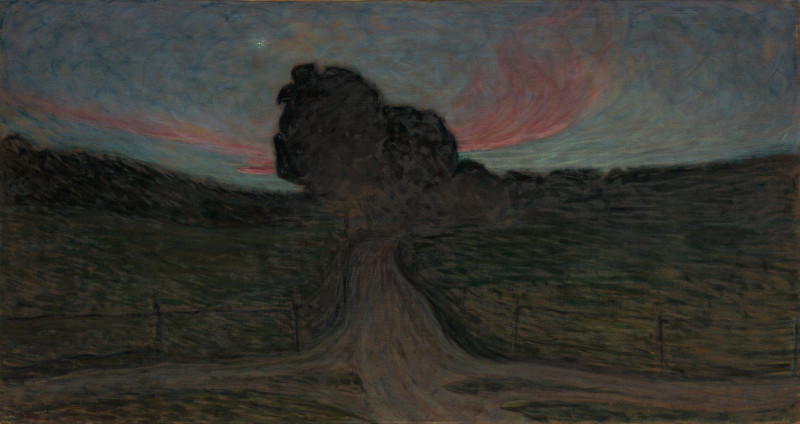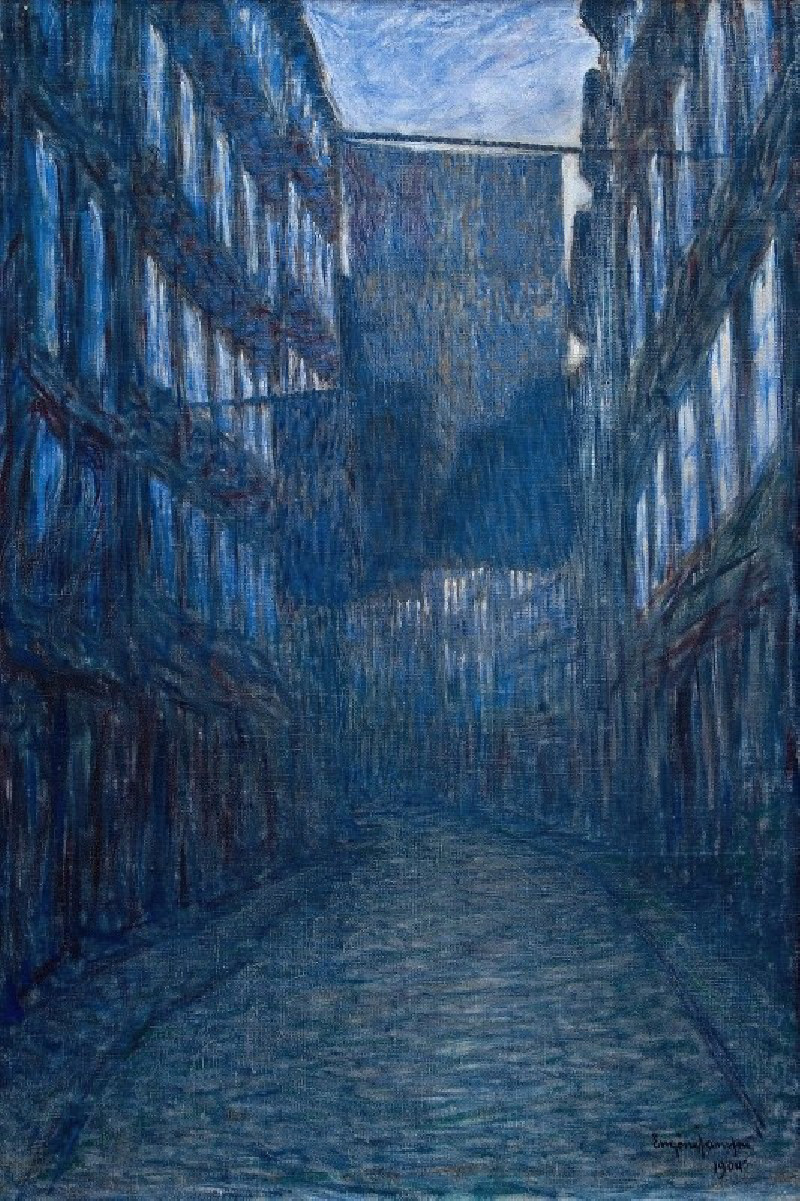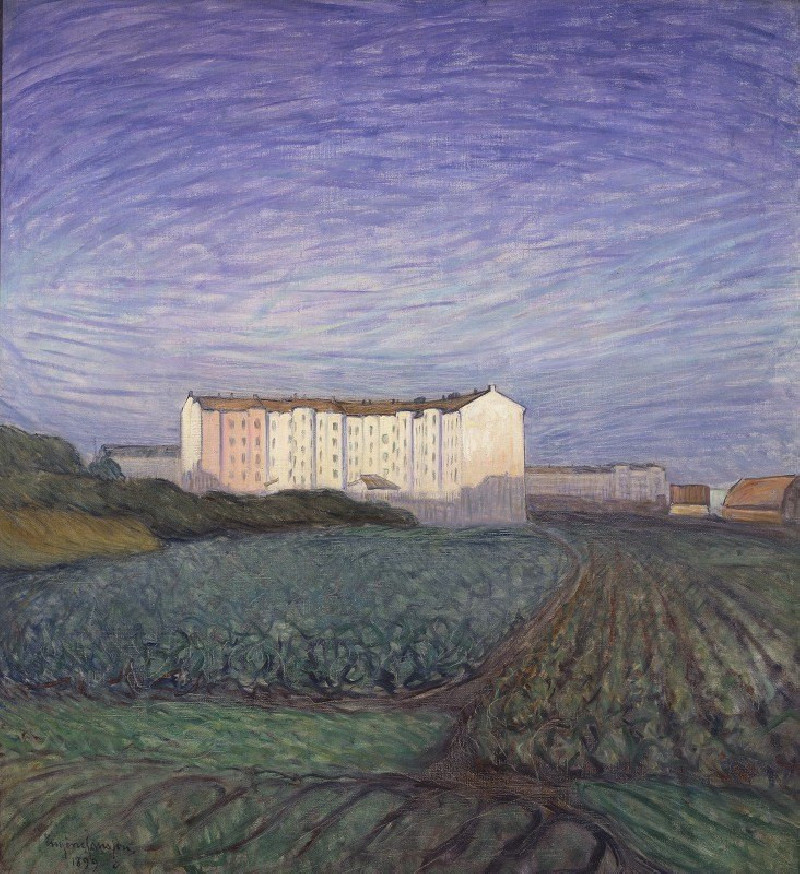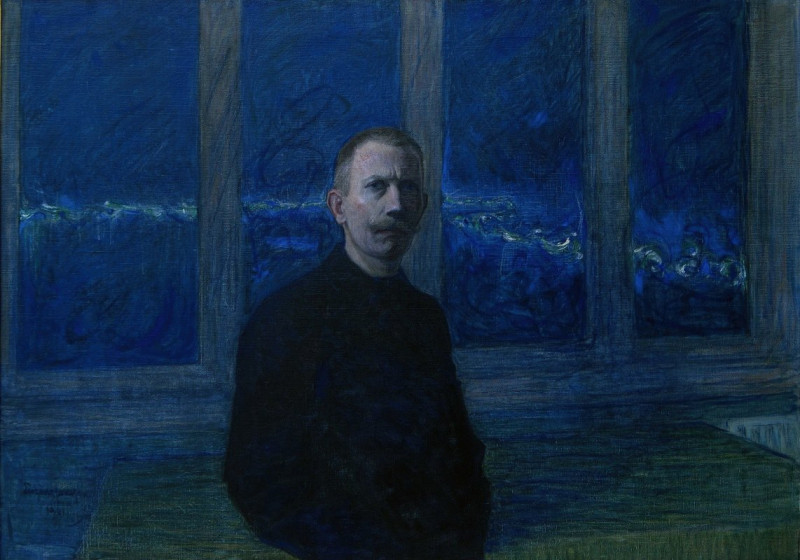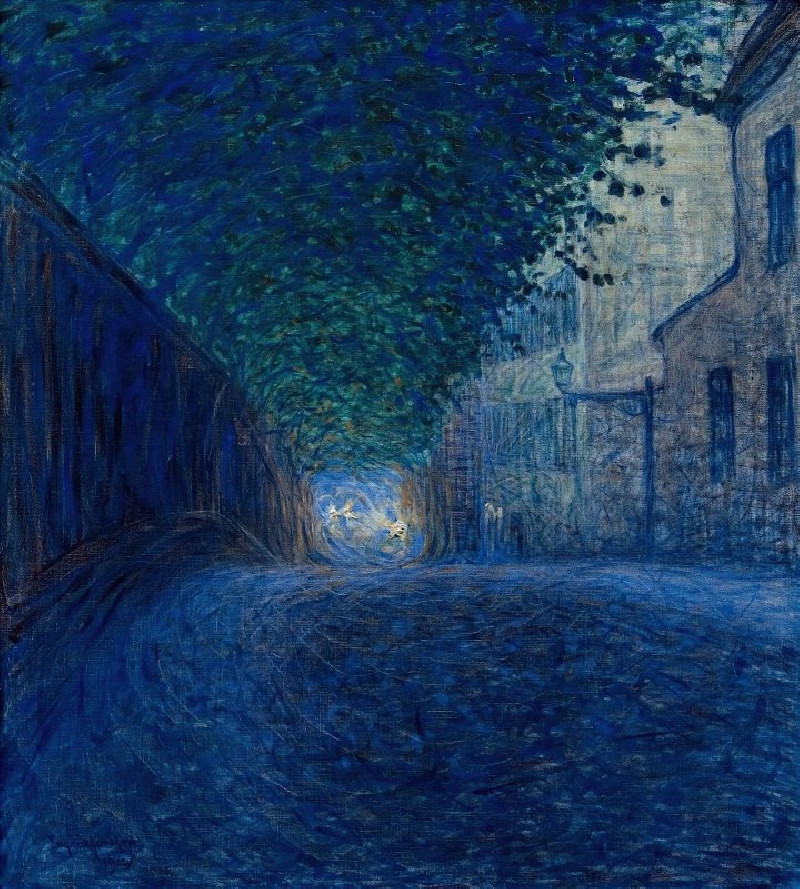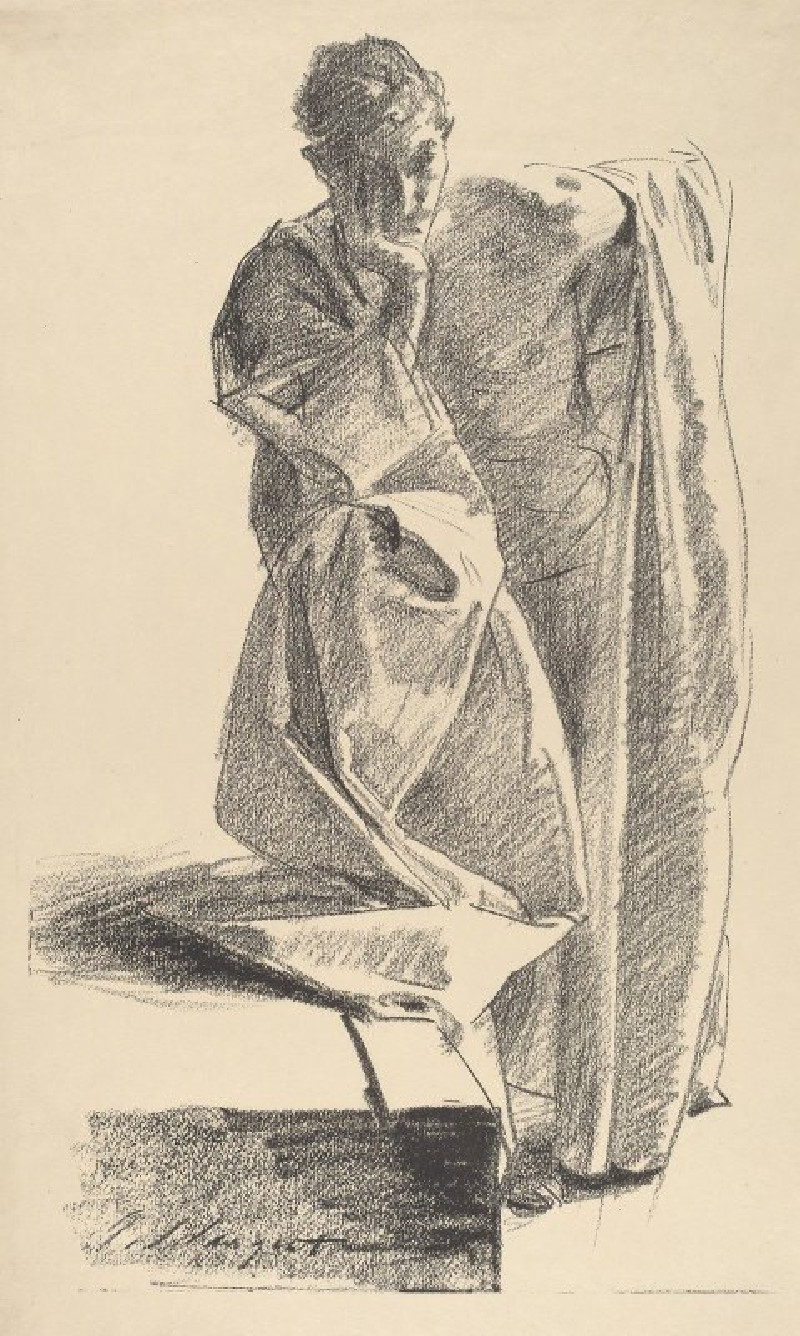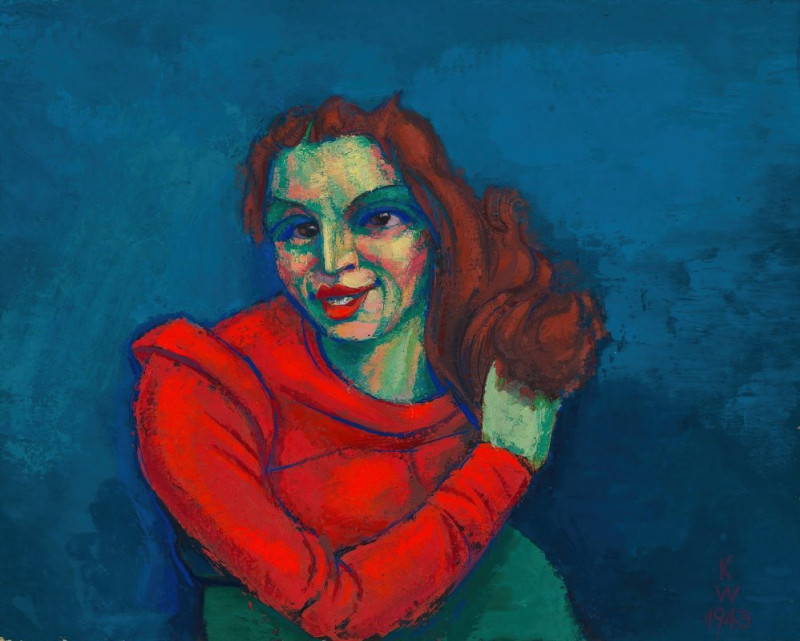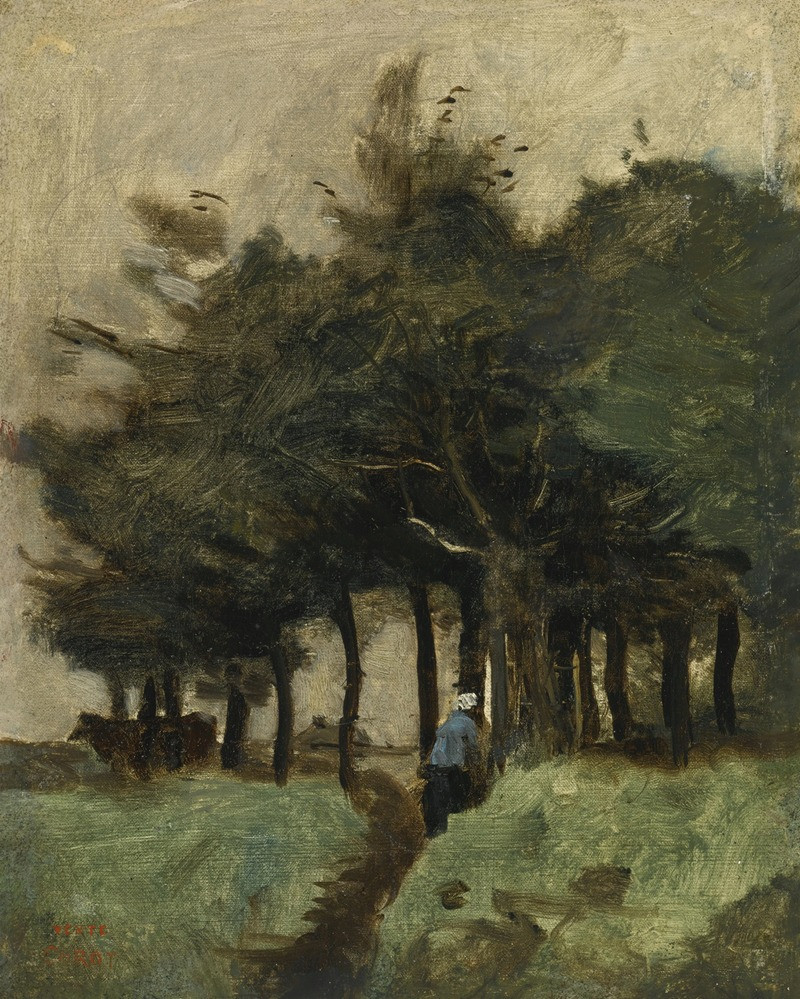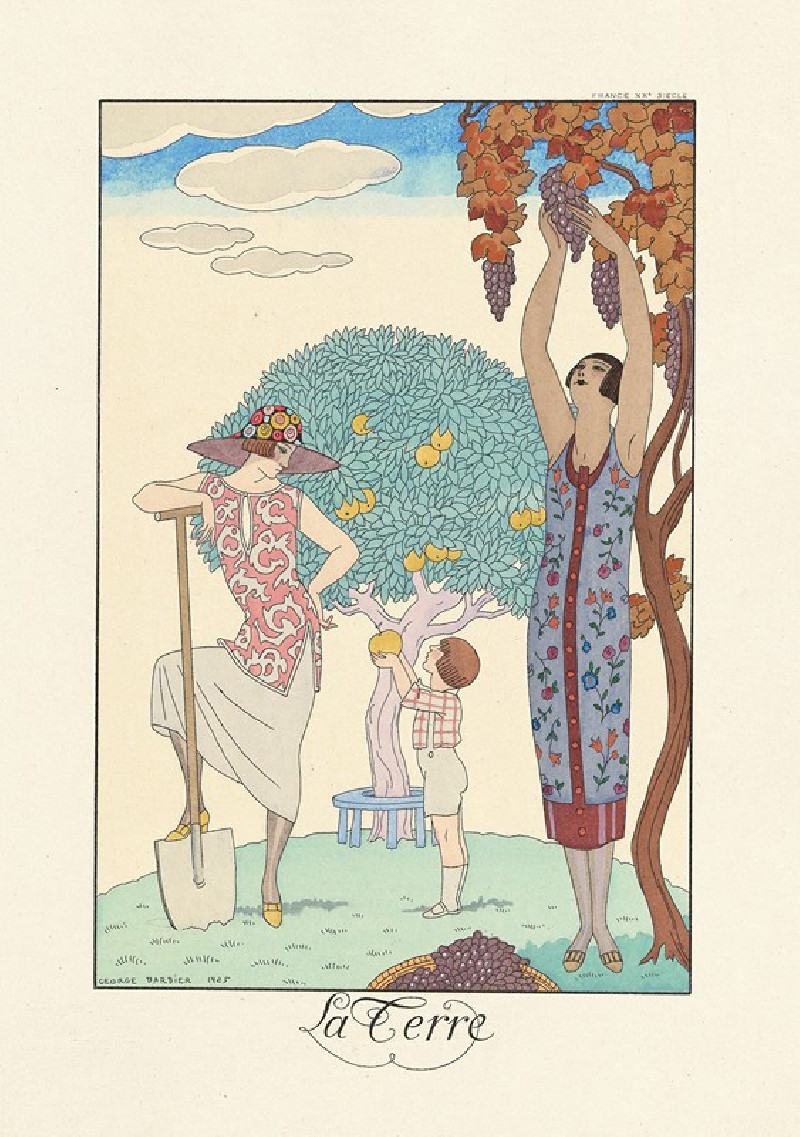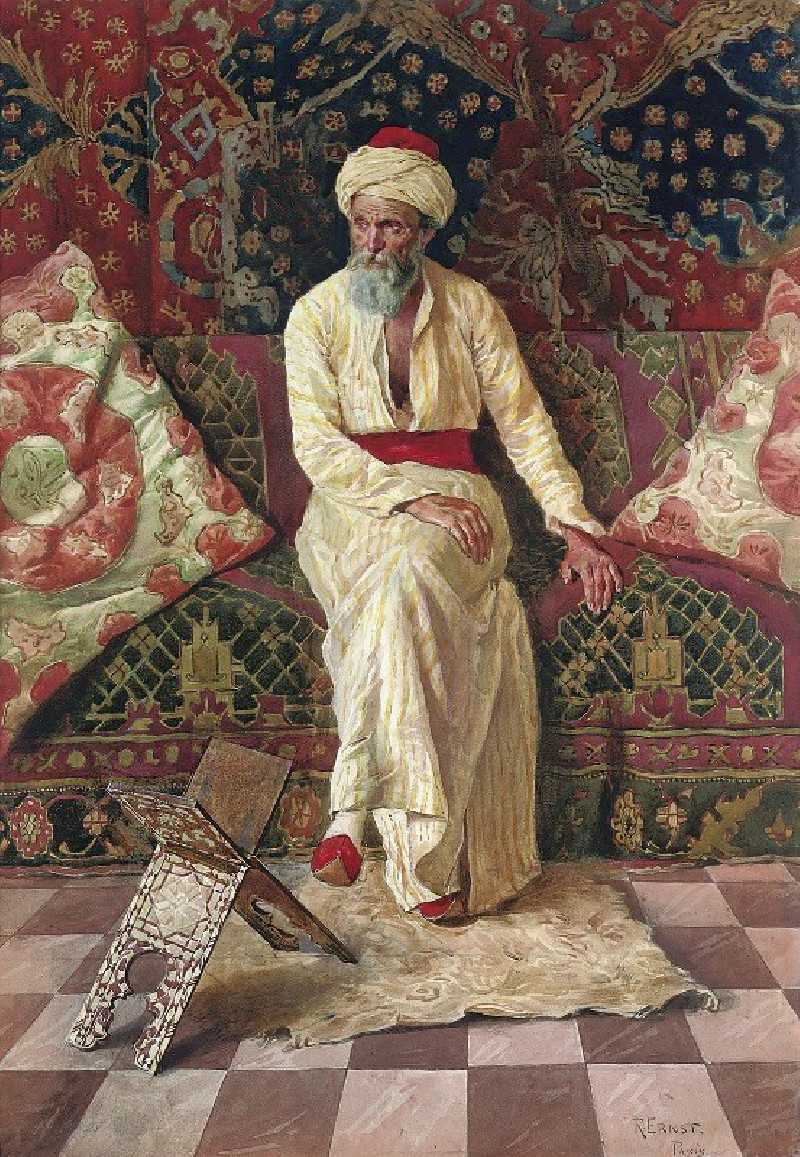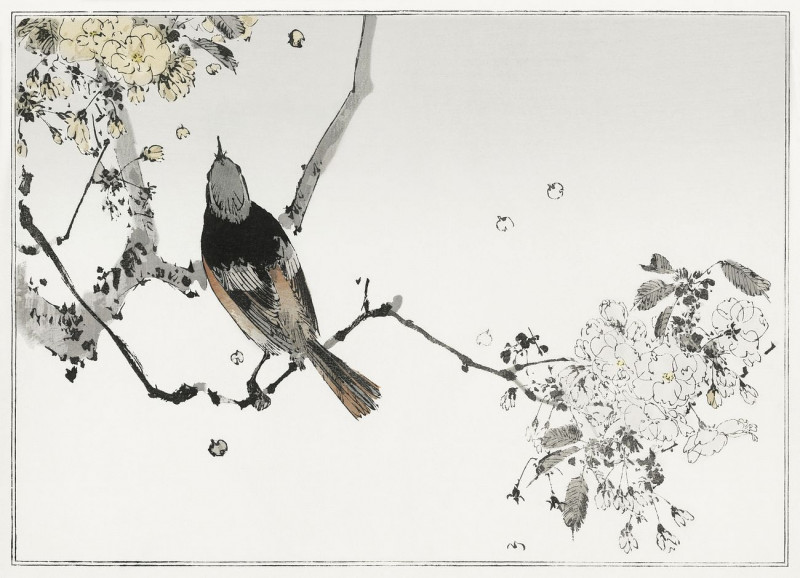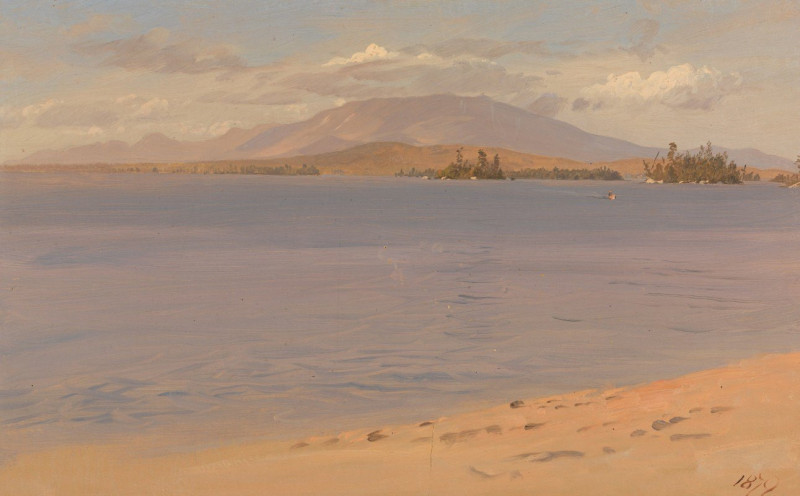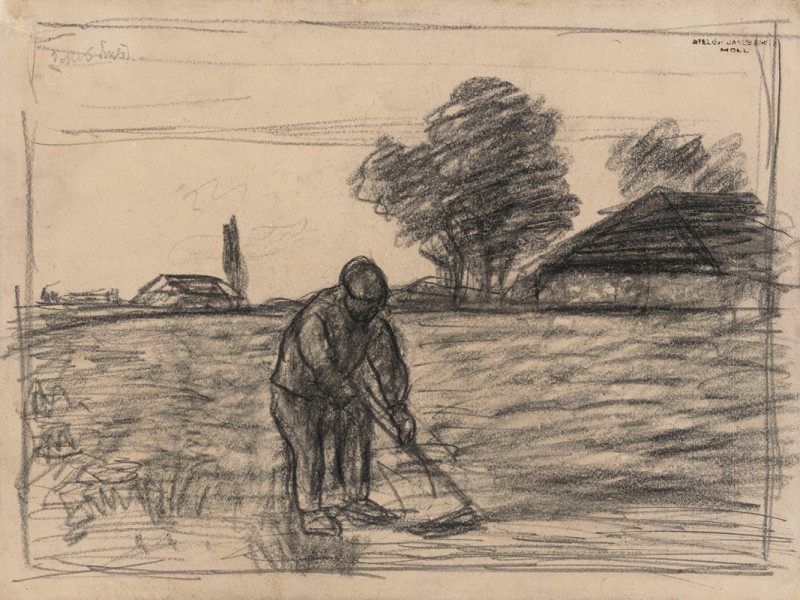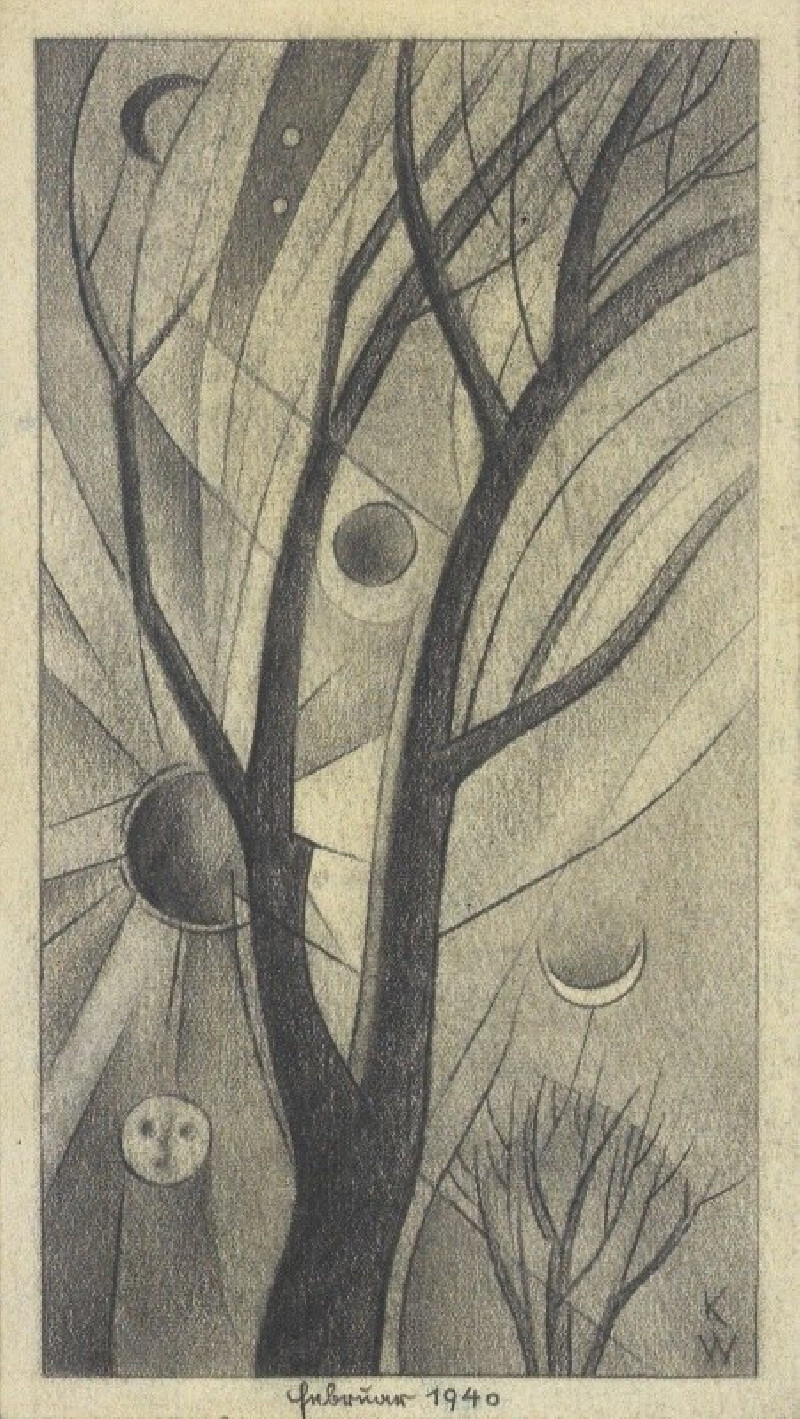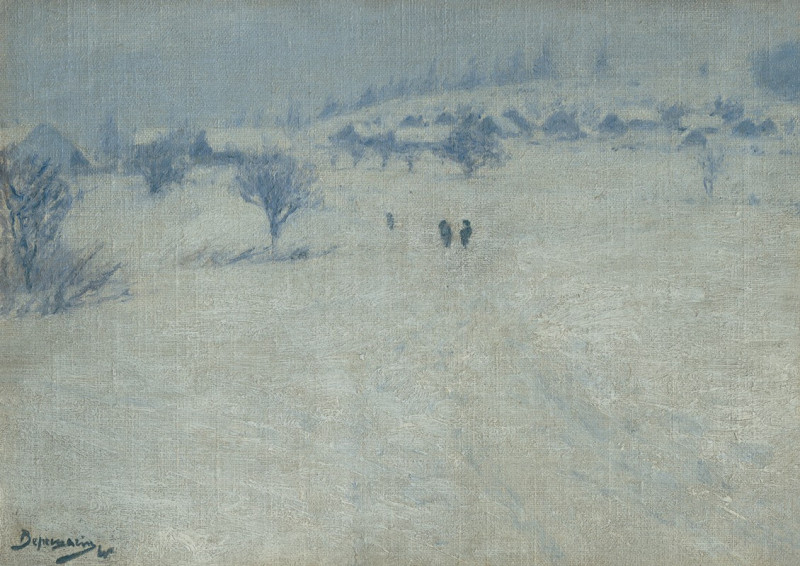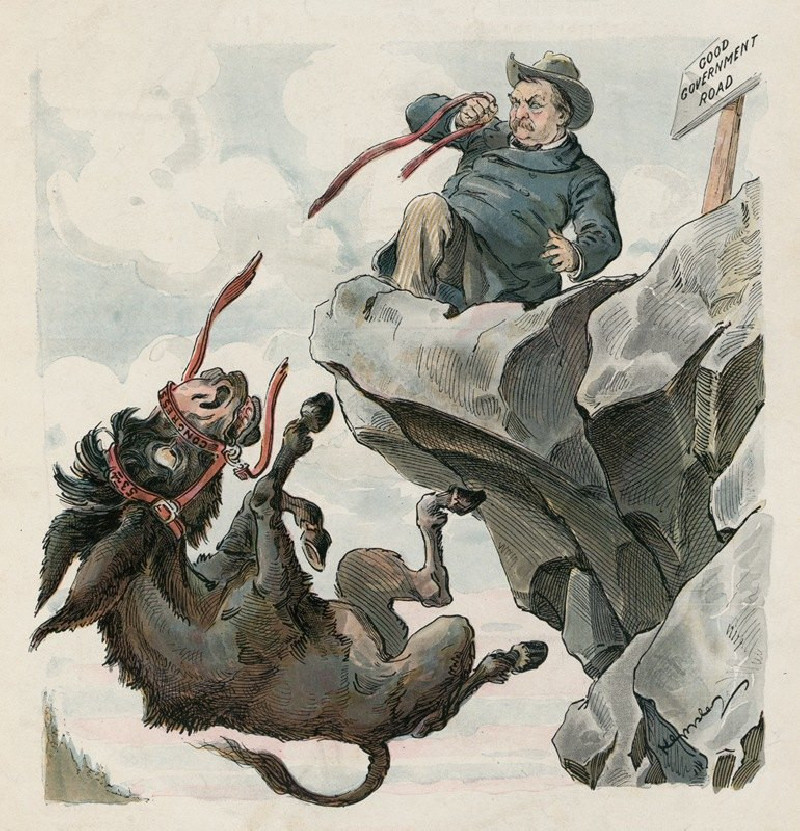Circus Scene (1913-1914)
Technique: Giclée quality print
Recommended by our customers
More about this artwork
Step into the vibrant and dynamic world of Eugène Jansson’s ‘Circus Scene’ created between 1913 and 1914. This captivating painting invites viewers into the mesmerizing atmosphere of a circus performance, an enchanting spectacle of entertainment that was a popular subject among artists in the early 20th century. The artwork provides a raw insight into the magical world of the circus through the eyes of an expressionist.In 'Circus Scene,' Jansson masterfully captures a high-energy moment: a muscular performer in a striking orange costume demonstrating his strength and balance atop a horse. The performer, adorned with a dramatic feathered headpiece, holds a graceful pose which illustrates not only his physical prowess but also the artistry of the circus. The horse, elegant and strong, circling the small ring, adds to the excitement of the performance.The backdrop is alive with the blurred faces of the audience, layered in a sea of dark hues, which emphasizes their rapt attention and the dim lighting of the circus tent. This technique not only focuses our gaze onto the brightly lit central figure but also amplifies the intimacy of the circus ring, making viewers feel as though they are part of the crowd, experiencing the thrill of the performance firsthand.Jansson's use of quick, energetic brushstrokes and a rich color palette enhances the movement and vibrancy of the scene. His depiction goes beyond mere representation; it evokes the emotion and thrill that circuses historically promised to every spectator who walked into the tent. 'Circus Scene' not only captures a moment in time but also expresses the transcendental quality of performance art, compelling the viewer to admire the prowess and elegance of the human spirit.
Delivery
Returns
Eugène Fredrik Jansson (18 March 1862, Stockholm – 15 June 1915, Skara) was a Swedish painter known for his night-time land- and cityscapes dominated by shades of blue. Towards the end of his life, from about 1904, he mainly painted male nudes. The earlier of these phases has caused him to sometimes be referred to as blåmålaren, "the blue-painter".

